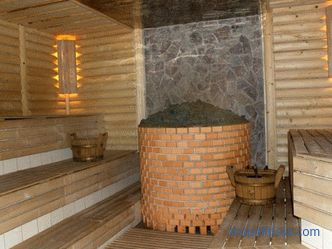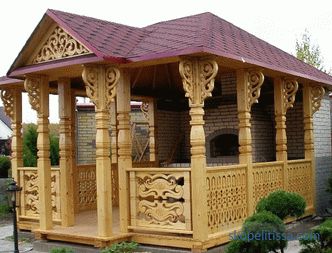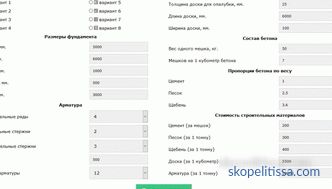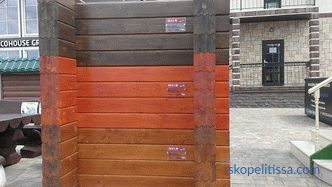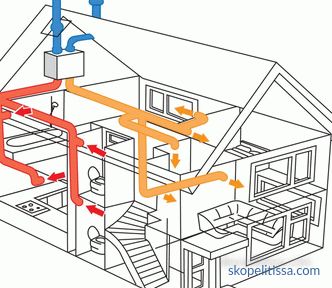A warm roof is a term that is associated with a modern approach to the construction of roof structures. Because through the roof of the house there are losses of heat energy, equal to 20-30% of the total heat loss. And this is a significant value. Therefore, the article will tell you what materials are used today for roof insulation, what technologies are used for their installation, and several technological solutions for insulation of roofing structures.
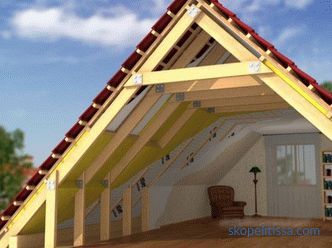
Thermal insulation materials for roof insulation
Let's start with insulants, because they form the basis of the insulating cake. It should be noted that in the market of insulation a huge variety. But not everyone is popular among country developers. After all, for many, an optimal price ratio of materials with their quality is required. Therefore, for the thermal insulation of roofs, claydite, mineral wool and polystyrene foam plates, as well as polyurethane foam in the form of a sprinkled foam mass, which becomes strong in the air, are used most often.
At once we will designate that expanded clay is used only on flat roofs. Although there existed until recently the technology of filling it on the sloping roofs. Simply, these methods have become irrelevant with the advent of plate models.
Let's look at the technical specifications of all the above materials.
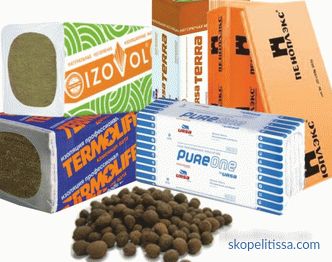
Expanded clay
This is a porous clay material that is formed in pellets and fired at high temperatures. When fired, the moisture evaporates, forming pores inside the granules. That is why this material is heat insulating.
Specifications:
-
thermal conductivity - 0.1-0.18 W / m K;
-
density - 250-600 kg / m³ (depending on the fraction);
-
strength - 2-2.5 MPa ;
-
water absorption is up to 20%;
-
material is cold-resistant .
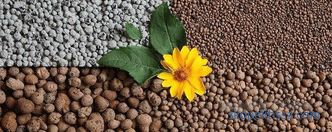
Mineral wool
This insulation is and expanded clay, used in construction for a long time. Until recently, it was a roll material, then it began to be produced in mats. Today, mineral wool plates are very popular. It should be noted that the group of mineral wool insulation includes a fairly large range of products, differing from each other in raw materials. Builders give preference to the basaltic subgroup.
Specifications:
-
density from 75 to 200 kg / m³;
-
thermal conductivity - 0.032-0.044 W / m K;
-
water absorption - 6-30% depending on density;
-
material non-combustible with a melting point of + 600 ° C;
-
environmentally pure .
From the list of characteristics it can be seen that the water absorption rate of the mineral wool is high. Manufacturers are trying to reduce it, and they have recently begun to succeed. But in any case, the mineral wool used in the device of the warmed roof is necessarily waterproofed from both sides using membranes and films. This is the way to ensure the effective and long-term operation of this material.
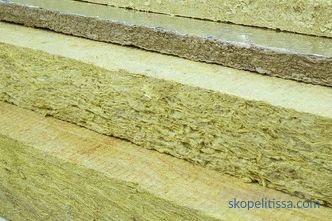
On our site you can familiarize yourself with the most construction sites in the Moscow region country house . In filters you can set the desired direction, the presence of gas, water, electricity and other communications.
Polystyrene plates
They are presented on the market in two types: ordinary and extruded. They differ from each other method of manufacture. And in appearance the first is the panels cut to the required dimensions. That is, from the trimmed ends it is an open version. The second is made by the method of production of plates of the required sizes. That is, all their ends are closed.
In addition, the thermal conductivity of this material is quite low, it varies in the range of 0.028-0.034 W / m K. Expanded polystyrene is a material that does not absorb moisture. Therefore, it can be laid without protective layers.
And other characteristics:
-
density - 25-45 kg / m³;
-
water absorption - 0.2-0.4%;
-
the material belongs to the group " combustible ";
-
in it make their homes rodents and insects .
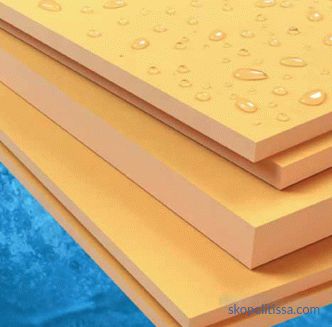
Polyurethane foam
As mentioned above, This heat insulation material is a liquid foam, which is obtained by combining two different components. After applying to the heat-insulated structures, the foam hardens, turning into a monolithic seamless layer.
In order to mix the ingredients, and to create conditions for the supply of foam, you need special equipment. Without it, insulation with polyurethane foam does not hold.
And now look at the photo below, where it is shown how thick the insulation should be to replace the heat-shielding effect of a brick wall laid in two and a half bricks.
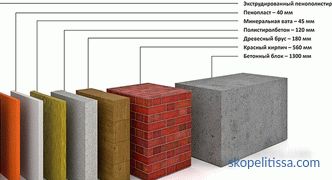
It is this photo that clearly shows which insulation material is the best. But since we are mainly interested in the device of a warm roof, it is impossible to choose according to this principle here. We have to take into account the fact that the insulating cake, in fact, is on the street, because it covers only the roof covering. And it, as practice shows, is most often metallic.
Therefore, it is necessary to approach the choice of insulation primarily from the standpoint of the thickness of the material. And the more this parameter, the better. Of course, this affects its value. But here it is not necessary to choose, especially when it comes to mansard roofing. In this case, the builders are trying to solve the problem in the following way - by laying the insulation layer with a thickness equal to the width of the installed rafters. This is an ideal approach to solving the insulation of the roof structure.
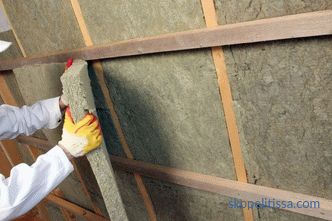
It might be interesting! In the article the following link read about roof installation on the balcony: types of designs and prices + examples in the photo .
Types of roofs and ways of their warming
There are two types of roofs: flat and pitched. For the first, the angle of inclination does not exceed 5 °, for the second, this parameter is located within 5-90 °. Accordingly, the approach to the implementation of the roofing with insulation is not the same.
How to insulate a flat roof
Flat roofs are formed by building overlapping. And this or reinforced concrete slabs, or one monolithic slab, filled in place. In any case, it is a concrete horizontal plane. Insulate it as follows:
-
Close up defects with repair compound or bitumen mastic.
-
Processed with a primer or a bitumen primer.
-
Claydite is filled up with the required layer, which is calculated when creating the project for the house.
-
Cover it with waterproofing film .
-
Set the reinforcing frame in the form of a steel reinforcement grid.
-
Fill the concrete screed , from which the angle of the roof is formed.
Foamed polystyrene plates can be used instead of expanded clay. They are laid close to each other without gaps. If they are found after the installation of the insulation, the slots are filled with a special sealant. Some manufacturers make plates with connecting chamfers. This makes it possible to assemble panels without joints.
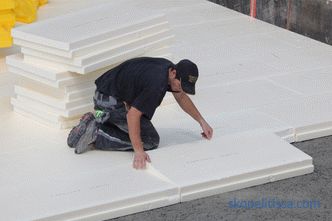
Fastening of polystyrene foam panels to a concrete base is carried out with either bitumen mastic or dowel-nails. Everything else is exactly the same as in the previous case. That is:
-
cover the heat-insulating layer with a waterproofing membrane;
-
set reinforcement;
-
pour concrete at an angle.
As for the insulation of flat roofs with polyurethane foam, the base is prepared for this: garbage is removed, dust is removed. And then the insulation is applied in three layers, the total thickness of the coating should not be less than 32 mm. The layer obtained after processing withstands decent mechanical loads, and it is possible to walk freely on the insulated roof. This is not only warming, but also excellent waterproofing. Polyurethane foam does not change its characteristics under the action of ultraviolet rays, large amounts of water, low and high temperatures, acids and alkalis.
The video shows how polyurethane foam covers the flat roof of a building:
How to insulate a sloping roof
Thermal insulation of a sloping roof - This is the installation of insulation between the rafter legs. With a reservation - if a plate model is used for this. If polyurethane foam is used, the entire truss system is filled, including the rafters themselves.
We will not go into the details of creating a warm roof with the help of foam polystyrene plates and mineral wool. Simply designate what layers it consists of.
If it is decided to use mineral wool boards:
-
The first layer is closer to the roofing - vapor barrier .
-
Second - insulation .
-
The third - waterproofing membrane .
The lower waterproofing layer is protective. Its task is not to allow moist warm air vapor emanating from the interior of the house to penetrate into the insulating layer.As mentioned above, mineral wool is a hygroscopic material that absorbs moisture well, losing its thermal insulation qualities.
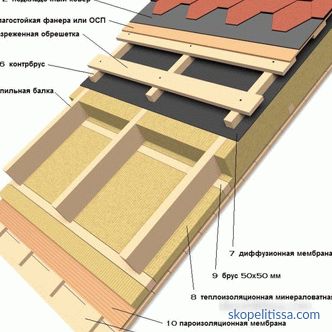
It may be interesting! In the article the following link read about types of roofs in a frame house: choice of material for a roof .
There is always the likelihood that somewhere in the waterproofing coating there will be a small hole or gap through which the fumes still penetrate upwards. Therefore, the insulation from above is closed with vapor barrier. This film has special properties. On the one hand, it can pass air and moisture through it, on the other it does not. Therefore, the first side of it is laid in the direction of the insulating material. The reason is to remove the very slight moisture vapor that has penetrated the insulation layer.
The opposite hermetic side is directed towards the roofing material. This is in case the roof suddenly forms a leak. That is, the vapor barrier does not allow water to pass into the heat-insulating cake.
In this regard, it is easier with polystyrene foam. He is not afraid of moisture and water, so from the bottom side it does not make sense to finish it with a layer of waterproofing. The builders do that. But from the outside, the protective insulation is laid anyway. This is again in case of unforeseen leaks.
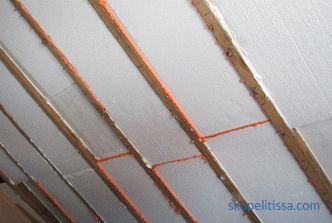
And the insulation of the roof with polyurethane foam. Usually this material is used only if there is a continuous crate on the roof. Because in its original form, this insulation is a semi-liquid foam mass. And she should stick to something.
Again, when solving the problem of leakage from the side of the roof covering, it is necessary to install a waterproofing film under the crate. That is, first install waterproofing on the rafter legs, to her and fasten it. And then from above mount the elements of the batten.
The video shows how polyurethane foam is applied to the roof of the house from inside the attic:
It can be interesting! In article on the following link read about the highlight of the landscape - "floating" staircase and garden paths under which the grass can grow.
Conclusion on the topic
So, we have dealt with a warm roof (construction, materials and insulation technology). In fact, the insulation of the roofing material is not as expensive as the construction of the structure itself. Compared with the budget of the entire construction of the house, this position in the estimate will take less than 1%. But when operating the building, this will be reflected seriously, especially in reducing energy consumption.
